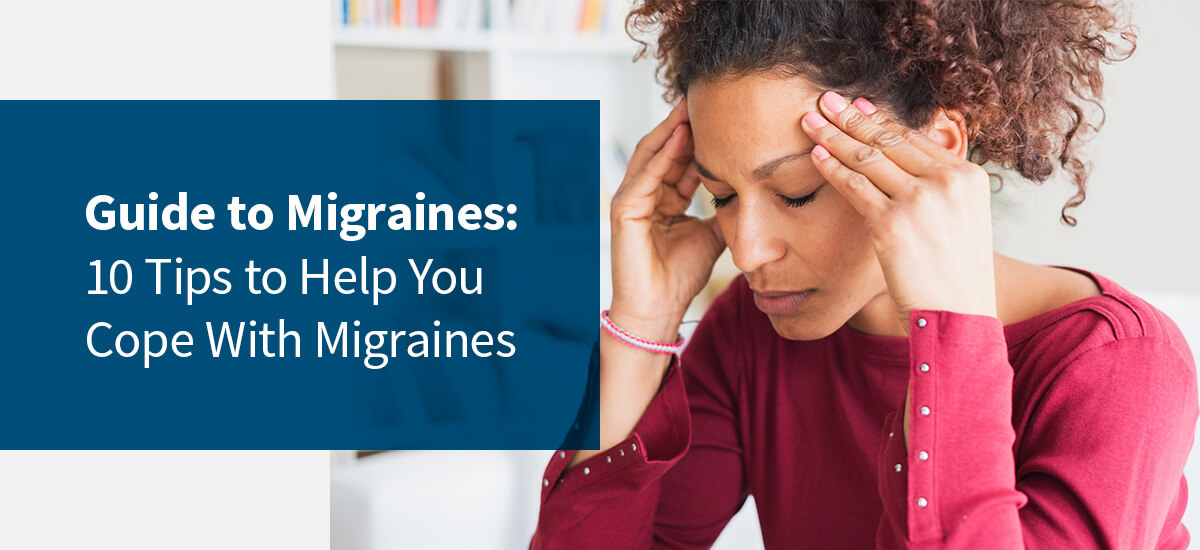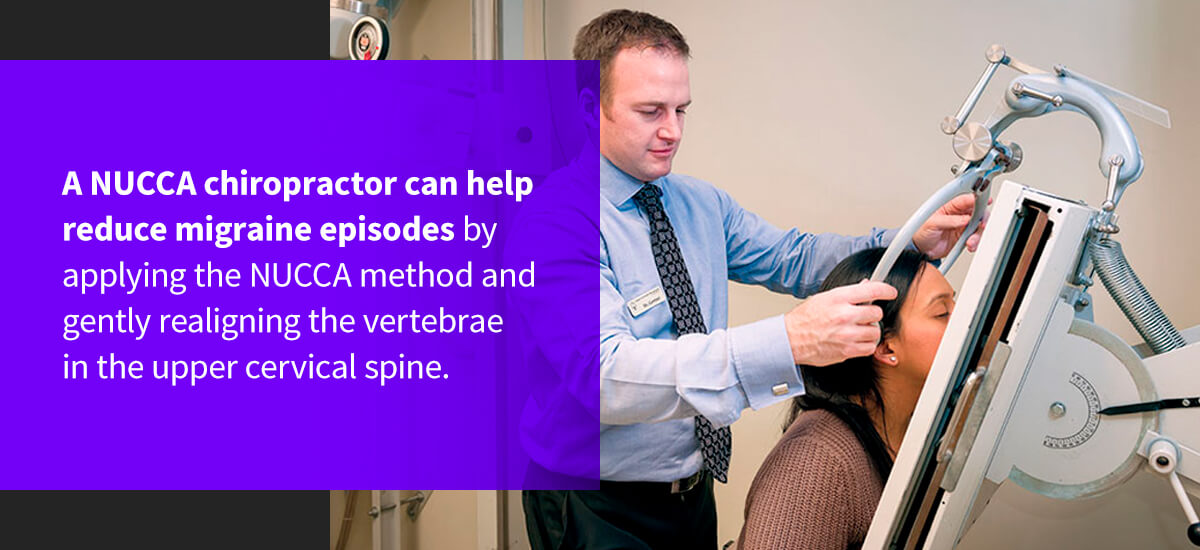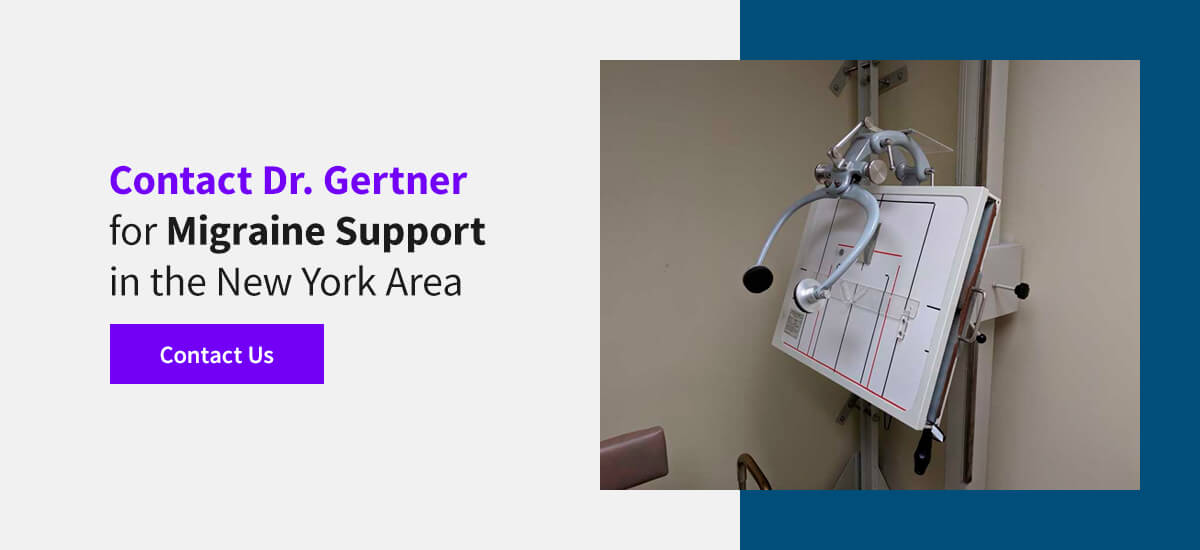Did you know that over 37 million U.S. children and adults deal with migraines? This condition occurs due to a neurological disease that causes various symptoms, such as severe headaches and nausea. These attacks can last several hours, while some people experience migraine symptoms for several days.
If you get migraine headaches, you know how debilitating they can be. Many people with headache disorders find it difficult, if not impossible, to complete daily tasks and attend school or work. It turns out that migraines are one of the leading causes of disability worldwide.
Fortunately, there’s good news. You can prevent and relieve migraine pain, whether you experience symptoms once a month or once a week. In this post, we share tips for relieving migraines and managing the disease, so you can live life the way you want.
Migraines vs. Headaches — How Do They Differ?
A headache is “pain or discomfort in the head, scalp or neck.” The most common type of headache is a tension headache, which usually doesn’t cause debilitating pain, nausea or sensitivity to light. Those who experience tension headaches often do so because of alcohol, eye strain, caffeine and other triggers.
A migraine is not your average headache. These episodes encompass a range of neurological symptoms, including vision changes, sensitivity to light and sound and vomiting and dizziness — all in addition to an intense headache. When someone experiences a migraine attack, they may not have the strength to leave their bed. If symptoms appear at work or school, the person might have to go home before the day’s over.
It’s essential to know the difference between a migraine and headache, so you can get the proper treatment and find relief.
10 Tips for Managing Migraines
Migraine symptoms don’t have to put your life on hold. You can take steps to reduce the frequency of migraine episodes and relieve symptoms when they occur.
Here are 10 tips to help you cope with migraine:
1. Identify Potential Triggers
When you experience a migraine headache, consider writing it down in a diary so you have a record. Include:
- What you ate and drank
- If you drank enough fluids
- What the weather is like
- How you slept
- How you feel
- If you were exposed to bright light
- If you smelled perfume, chemicals or another strong odor
If you identify your triggers, you can take steps to avoid them or cope with them better. For example, if you realize that bright light triggers a migraine headache, wear sunglasses, even if you’re indoors. Alternatively, if you often experience a migraine after drinking wine, limit or avoid alcohol consumption. Write down anything you think may be a trigger and look for patterns.
2. Exercise Often
Exercise improves sleep and reduces stress levels, which can both help prevent migraine headaches. When you exercise, your body releases chemicals called endorphins. Endorphins are your body’s natural pain relievers and mood boosters. Exercise also reduces the level of stress hormones in your body, such as cortisol. Try to get 30 minutes of exercise every day to boost your health.
3. Get Enough Sleep
Are you sleeping seven to eight hours a night? Getting adequate sleep can reduce the number of migraine attacks you experience and decrease symptom severity. Aim to develop a relaxing bedtime routine and go to sleep and wake up at the same time every day. It’s essential to have a consistent sleep schedule to help you manage stress and keep migraine symptoms at bay.
4. Relax When Possible
Stress is one of the most common triggers for migraines. Although you can’t eliminate all stressors, like sitting in traffic, you can change how you respond to everyday stress. Here are tips to help you relax, even with the daily grind:
- Set aside a little time every day to practice relaxation techniques, such as deep breathing exercises, yoga or meditation.
- Leave room in your daily schedule for activities you enjoy, and avoid packing too many chores in one day.
- Talk with caring friends or family members about things that are troubling you, or meet with a counselor for support.
- Turn negative thoughts into positive ones.
- Avoid stressful situations when possible.
- Let yourself laugh.
- Learn to let go of the things you can’t control.
5. Rest in a Dark, Quiet Room
Most people with migraines experience photophobia — an extreme sensitivity to light. Sensitivity to sound is also common. If you begin to experience migraine symptoms, go to a dark, quiet room to lie down as soon as possible. While you’re there, focus on your breathing to help your body and mind relax. You may also find relief by applying a cold cloth to your forehead or temples as you rest. Getting yourself away from bright light and noise can help relieve migraine pain and reduce your stress levels.
6. Stay Hydrated
Dehydration is another top migraine trigger. Even slight dehydration can bring on a migraine headache for many people. To keep yourself hydrated, bring a water bottle with you wherever you go and avoid consuming too much coffee, tea and other diuretics. If you start to experience migraine symptoms, drinking a glass of water may be enough to keep them from worsening.
7. Try OTC Pain Relievers
If you speak to your doctor about migraine headaches, they might recommend taking over-the-counter (OTC) pain relievers such as acetaminophen or nonsteroidal anti-inflammatory drugs. However, if you experience severe migraine symptoms or OTC pain relievers don’t bring relief, your doctor might prescribe triptans. Triptans are medications that alleviate migraine symptoms after an attack begins. It’s worth noting that they may not be safe for patients at risk of a heart attack or stroke.
8. Consider Preventive Medications
If triptans or OTC pain relievers don’t help with migraine pain, or if you need to take pain medicines more than twice a week, your doctor might recommend preventive medications. Many prescription medications that prevent migraine symptoms also treat other health conditions, like depression and epilepsy. For example, your doctor might prescribe antidepressants or anticonvulsants to prevent migraine headaches, depending on your needs.
9. Soothe Nausea
It’s essential to treat migraine-related nausea and vomiting because you want to avoid dehydration. If you often experience nausea with other migraine symptoms, your doctor might prescribe an anti-nausea medication. You can also try to relieve nausea at home by:
- Taking deep, slow breaths
- Eating bland foods
- Staying hydrated
- Drinking ginger tea or ginger ale
- Getting fresh air
10. Visit an Upper Cervical Chiropractor
Home remedies don’t always work, and medications can cause side effects or lead to health issues. For example, taking OTC pain relievers for too long can cause gastrointestinal bleeding or medication-overuse headaches. If you’re wondering how to get rid of migraine headaches with an alternative, drug-free treatment, consider visiting an upper cervical chiropractor.
An upper cervical chiropractor focuses on aligning the upper cervical spine and applying a particular technique established by the National Upper Cervical Chiropractic Association (NUCCA). The cervical spine is in the neck, with the top part connecting to the skull and the bottom connecting to the upper back. The cervical spine consists of seven vertebrae along with intervertebral discs, nerves, muscles and ligaments.
Misalignments in this area may lead to migraine symptoms. A NUCCA chiropractor can help reduce migraine episodes by applying the NUCCA method and gently realigning the vertebrae in the upper cervical spine.
From various standpoints, chiropractic treatment can improve migraine symptoms. A series of chiropractic sessions could reduce the frequency of painful episodes in patients with migraine headaches. Additionally, the NUCCA technique decreases how often patients experience migraine headaches, boosting their quality of life.
Contact Dr. Gertner for Migraine Support in the New York Area
Migraine symptoms can be a hindrance to your daily life, but you should still have hope. When tips for coping with migraines at home aren’t working, you want to work with the best for migraine relief. At Upper Cervical Chiropractic of New York (UCC-NY), we’re here to help you find relief through the NUCCA procedure.
At UCC-NY, you’ll meet Dr. Gertner, who is one of less than 300 physicians worldwide qualified to perform the advanced NUCCA technique. Dr. Gertner will apply this gentle procedure to restore your cervical spine to its proper position and take pressure off your spinal nerves, helping to alleviate migraine symptoms. If you’d like to schedule an appointment with Dr. Gertner or learn more information, please contact our office in White Plains.
REVIEWED BY DR. GEORGE GERTNER

Dr. George Gertner is a family man, healer, philanthropist, author of “The Gift of Hope”, public speaker, and founder of one of the world’s busiest Upper Cervical Chiropractic clinics.
After receiving his bachelors degree in biology from Hofstra University in Hempstead, NY Dr. Gertner moved to Atlanta, GA to attend Life University. Before graduation, Dr. Gertner had a severe injury to his lower back. Traditional chiropractic procedures were not providing relief until he met a chiropractor that specialized in NUCCA (National Upper Cervical Chiropractic Association.)
Then he spent the next two years mentoring from one of the best Upper Cervical doctors; learning in the same office that helped change his life. After two years, Dr. Gertner returned home to New York to open his own office. He currently is one of less than 300 NUCCA chiropractors worldwide.
Dr. Gertner has been featured numerous times in Chiropractic Monthly Magazine for his expertise in treating Trigeminal Neuralgia and Myofascial Pain. Dr. Gertner has lectured locally and nationwide discussing various symptoms using the Upper Cervical technique.




